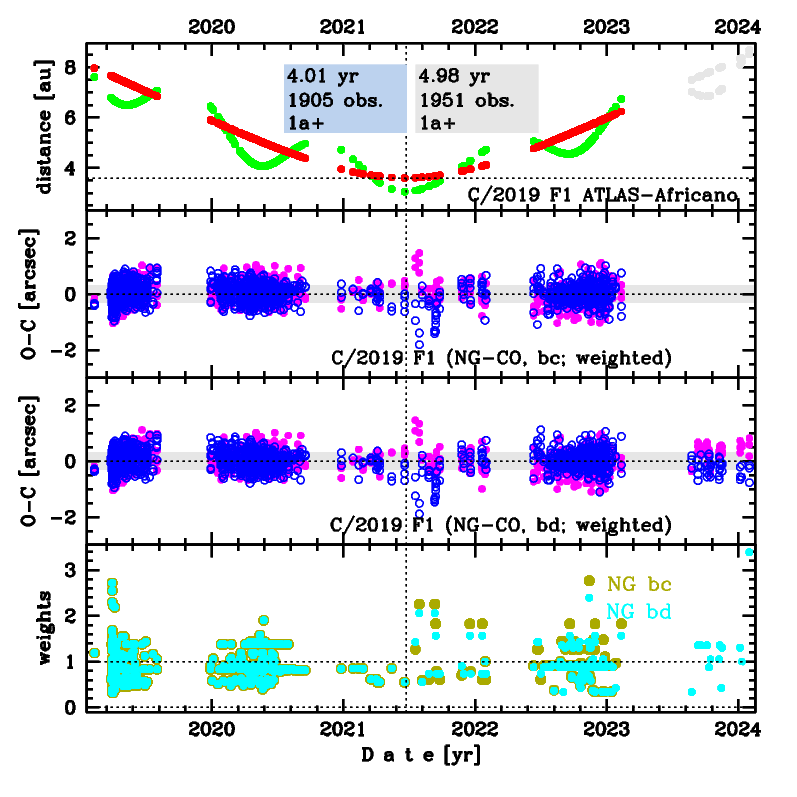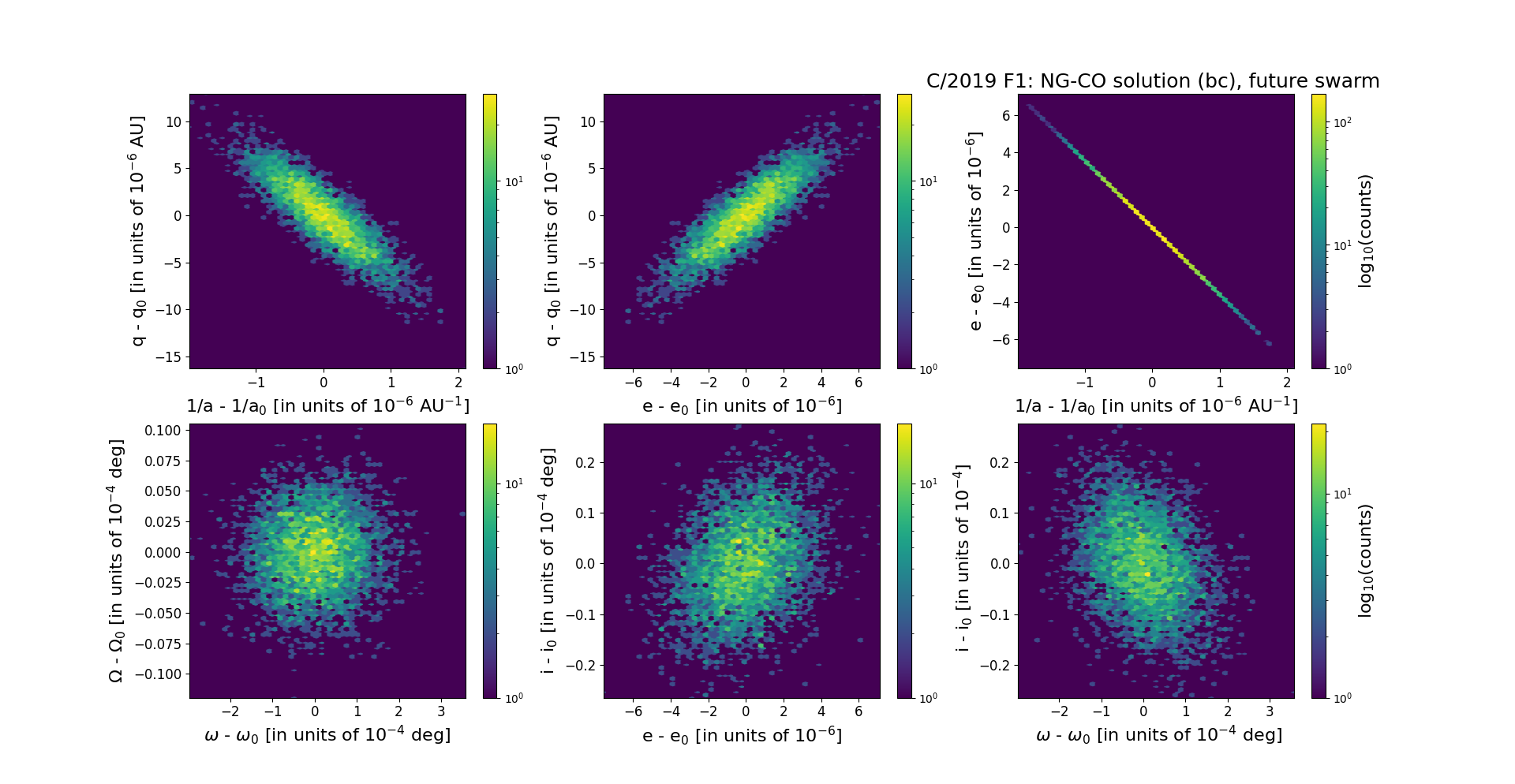C/2019 F1 ATLAS-Africano
more info
Comet C/2019 F1 was discovered on 28/29 March 2019, more than 2 yr before its perihelion passage. Later a series of pre-discovery observations were found going back to 8 February 2019. This comet was observed until 31 January 2024 (as in February 2025).
Comet had its closest approach to the Earth on 21 June 2021 (3.05 au), only about two days before its perihelion passage.
This comet reveals strong NG effects within positional data (see [O-C] for solution 'bb'). The preferred NG solution given here span over 4.98 yr in a range of heliocentric distances: 7.96 au – 3.60 au (perihelion) – 8.514 au; also orbits based on pre-perihelion data and post-perihelion data are presented.
This Oort spike comet suffers small planetary perturbations during its passage through the planetary system that lead to a more tight future orbit with semimajor axis of about 5,900 au (see future barycentric orbits).
Comet had its closest approach to the Earth on 21 June 2021 (3.05 au), only about two days before its perihelion passage.
This comet reveals strong NG effects within positional data (see [O-C] for solution 'bb'). The preferred NG solution given here span over 4.98 yr in a range of heliocentric distances: 7.96 au – 3.60 au (perihelion) – 8.514 au; also orbits based on pre-perihelion data and post-perihelion data are presented.
This Oort spike comet suffers small planetary perturbations during its passage through the planetary system that lead to a more tight future orbit with semimajor axis of about 5,900 au (see future barycentric orbits).
| solution description | ||
|---|---|---|
| number of observations | 1905 | |
| data interval | 2019 02 08 – 2023 02 10 | |
| data arc selection | some part of the available data set (ST2) | |
| range of heliocentric distances | 7.96 au – 3.60 au (perihelion) – 6.24 au | |
| type of model of motion | NC - non-gravitational orbits for symmetric CO-g(r)-like function | |
| data weighting | YES | |
| number of residuals | 3749 | |
| RMS [arcseconds] | 0.32 | |
| orbit quality class | 1a+ | |
| orbital elements (barycentric ecliptic J2000) | ||
|---|---|---|
| Epoch | 2325 12 19 | |
| perihelion date | 2021 06 23.64005720 | ± 0.00034211 |
| perihelion distance [au] | 3.59190498 | ± 0.00000335 |
| eccentricity | 0.99943416 | ± 0.00000189 |
| argument of perihelion [°] | 251.125603 | ± 0.000079 |
| ascending node [°] | 38.655407 | ± 0.000003 |
| inclination [°] | 54.306649 | ± 0.000008 |
| reciprocal semi-major axis [10-6 au-1] | 157.53 | ± 0.53 |
| file containing 5001 VCs swarm |
|---|
| 2019f1bc.bpl |

Upper panel: Time distribution of positional observations with corresponding heliocentric (red curve) and geocentric (green curve) distance at which they were taken. The horizontal dotted line shows the perihelion distance for a given comet whereas vertical dotted line — the moment of perihelion passage.
Middle panel(s): O-C diagram for a given solution (sometimes in comparison to another solution available in CODE), where residuals in right ascension are shown using magenta dots and in declination by blue open circles.
Lowest panel: Relative weights for a given data set(s).
Middle panel(s): O-C diagram for a given solution (sometimes in comparison to another solution available in CODE), where residuals in right ascension are shown using magenta dots and in declination by blue open circles.
Lowest panel: Relative weights for a given data set(s).
